What is LPP: LPP, or Lichen Planopilaris, is a type of hair and scalp condition that causes patchy, red areas of hair loss. Scalp redness, itching, or burning combined with scattered patches of hair loss is usually a sign of LPP. The condition tends to affect women more than men, but anyone can develop LPP, usually between the ages of 30 and 60 years [1]. LPP tends to worsen over time, so paying attention to early signs and starting treatment as quickly as possible is essential. Some LPP patients may also experience small, red bumps around the areas of baldness in addition to itchy, scaly skin on the scalp. It is an unfortunate and uncomfortable condition, but fortunately, there are ways to combat LPP.
What is Lichen Planopilaris (LPP)

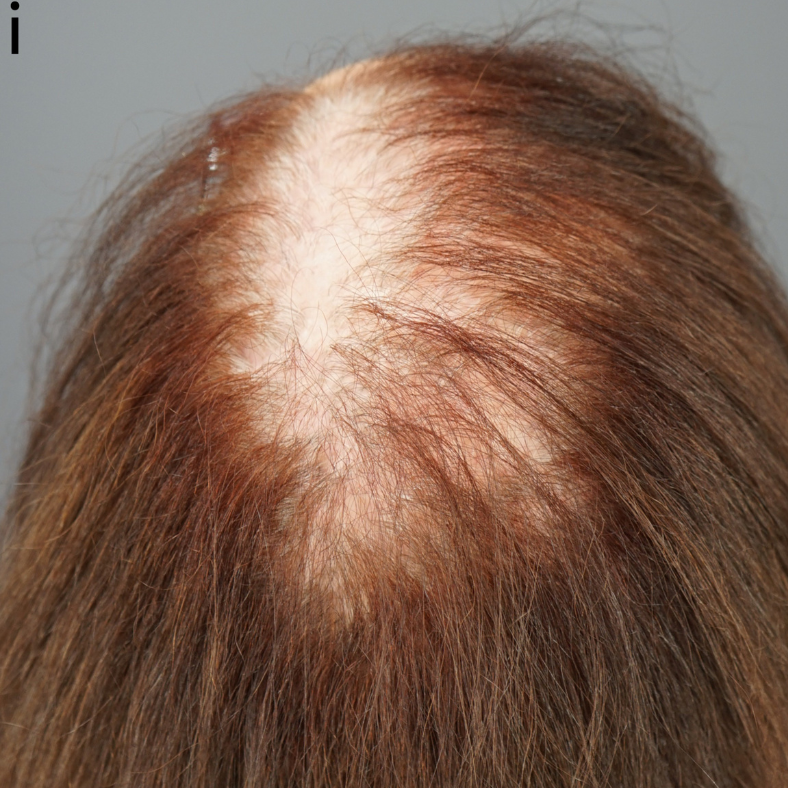
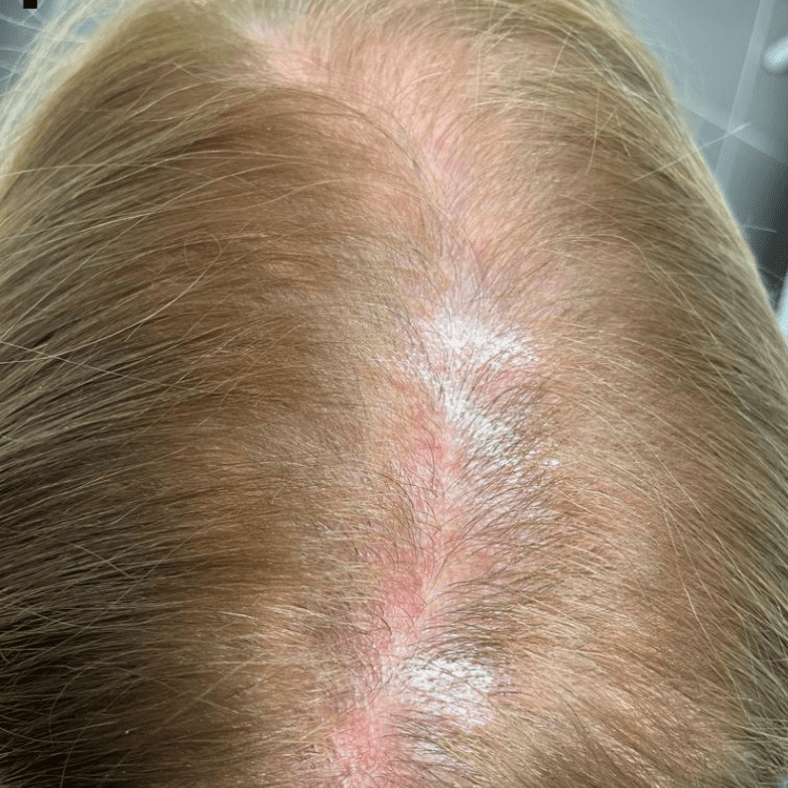
What Causes LPP?
Currently, the exact cause of LPP is unknown. However, according to the National Institute of Health (NIH) [1], LPP is believed to be an autoimmune disorder where white blood cells attack skin and hair cells, causing inflammation and destruction of hair follicles. While a direct cause has not been identified, practicing healthy hair and scalp behaviors can lessen the severity of the condition.
How to Avoid LPP or Reduce Symptoms of LPP
Several hair practices can be done to help avoid the onset of LPP or to reduce the symptoms of LPP:
- Avoid tight hairstyles that put pull or traction on the hair and scalp
- Avoid harsh chemicals
- Avoid harsh hair products
- Avoid using extreme heat on hair
Generally, practices that keep the scalp healthy are good in terms of helping avoid LPP. It is also essential to gently wash the hair and scalp and moisturize the hair as necessary.
Who Does LPP Affect?
Lichen Planopilaris typically affects adults ages 30-60, favoring women over men. This may be due to the likelihood of women using more products and demanding hairstyles over men, although the autoimmune disease is believed to be triggered by genetic factors [2]. Hair loss in men and women can begin as early as the teen years or 20s, but LPP can develop later in life, even after balding begins.
LPP Symptoms to Look Out For:
Although LPP symptoms may be similar to what may be interpreted as common genetic balding or pattern baldness, there are specific LPP symptoms that should be noted:
- Itching on the scalp
- Bumps on the scalp
- Pain around the scalp
- Redness of the scalp
- Increased hair loss
- Patchy hair loss
It is essential to look out for itching, bumps, pain, or redness on the scalp, mainly if hair loss appears patchy and less patterned, as this is a signifier of LPP (Lichen Planopilaris).
How is LPP (Lichen Planopilaris) Diagnosed?
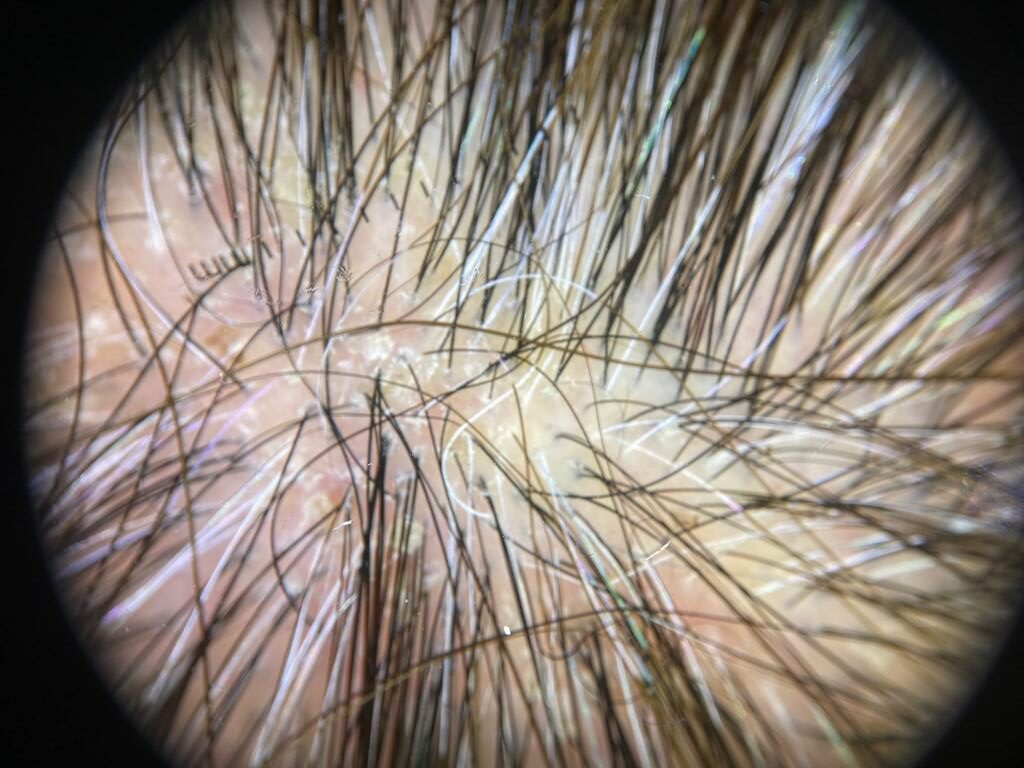
Dermatologists usually diagnose LPP after performing a biopsy, meaning they’ll take a small scalp sample and have it tested and analyzed in a lab. Furthermore, a trichoscopy can also be done to confirm the diagnosis of LPP for the patient.
LPP may be more challenging to diagnose, so inform your doctor of your symptoms in detail. Visiting a licensed and experienced dermatologist and hair expert is always recommended to diagnose the condition properly.
What Treatments Are Available for Lichen Planopilaris (LPP)?
Once diagnosed, several treatment options for LPP are available:
- Steroid injections to the scalp
- Pharmaceutical drugs, blockers
- Botanicals
Generally, LPP (Lichen Planopilaris) treatments consist of steroids such as corticosteroids, antibiotics, and retinoids. All are meant to lessen the symptoms of inflammation and prevent the further spread of the condition.
A commonly prescribed treatment is long-acting steroid injections (Typically triamcinolone) to the patient’s scalp, combined with pharmaceutical drugs (e.g., hydroxychloroquine, doxycycline, methotrexate, JAK Inhibitors like tofacitinib and naloxone) to inhibit specific pathways within the body to reduce the symptoms of LPP.
However, these treatments have potential side effects, so patients may desire a more natural approach to treatment.
Although the above treatments are the traditional industry approach, they are often ineffective or unsustainable due to the patient’s discomfort with repeated scalp injections and potential side effects from pharmaceuticals and drug-based products. Due to these possible side effects, many patients may desire a more natural approach to treatment, such as studied and tested botanical products that may help reduce symptoms of LPP through natural means.
One example of natural botanical products studied for LPP is Dr.UGro Gashee Natural Hair Products, featured in this published medical journal, “Lichen Planopilaris Responsive to a Novel Phytoactive Botanical Treatment: A Case Series,” published in Dermatology and Therapy.
Treating LPP with Botanicals – Published Medical Study of Botanicals on LPP Patients
Dr.UGro Gashee, Natural Hair Products have recently been studied and reported in the journal Dermatology and Therapy.
The study, titled “Lichen Planopilaris Responsive to a Novel Phytoactive Botanical Treatment: A Case Series,” reported how all 4 out of 4 LPP patients had “consistently showed a significant improvement in [LPP symptoms]” such as “reduction in inflammation, complete resolution of symptoms, and signs of hair regrowth.”

As reported in the study, compared to pharmaceutical or drug-based treatments for LPP, such as corticosteroids, hydroxychloroquine, and scalp injections, Gashee’s natural ingredients and properties pose few side effects for patients. In addition, they were used repeatedly for the long term due to these natural ingredients that are holistically compatible with normal human physiology.
Some of Gashee’s quality botanical ingredients include green tea, turmeric, aloe vera, and more. The word “botanical” is derived from plants. Dr.UGro Gashee’s products were expertly forged from ingredients grown in nature. As many plants are known for their naturally-occurring medicinal and healing properties, Gashee utilizes botanicals to safely and holistically help strengthen scalp conditions.
Before and After – Dr. UGro Gashee Natural Hair Health Products & LPP Research
See below for more before and after results of patients from the Gashee – LPP study.
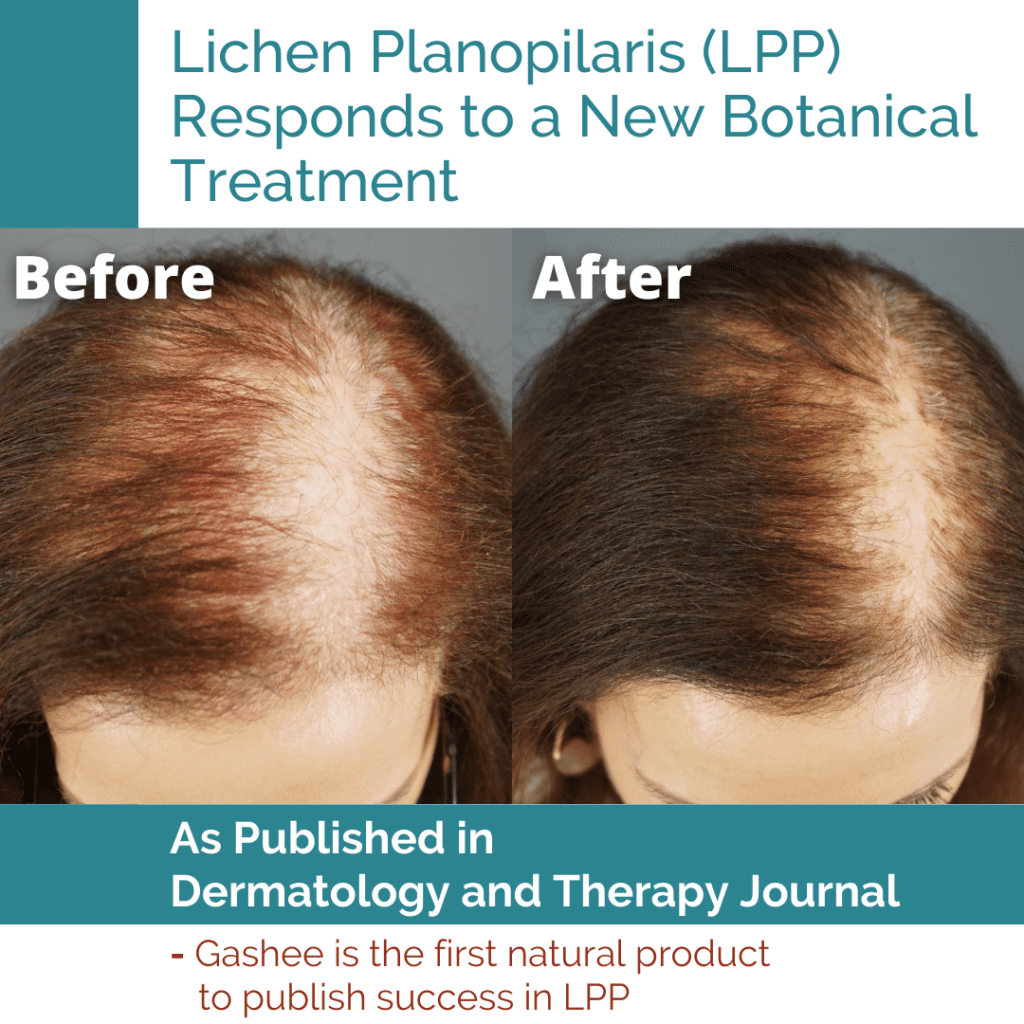
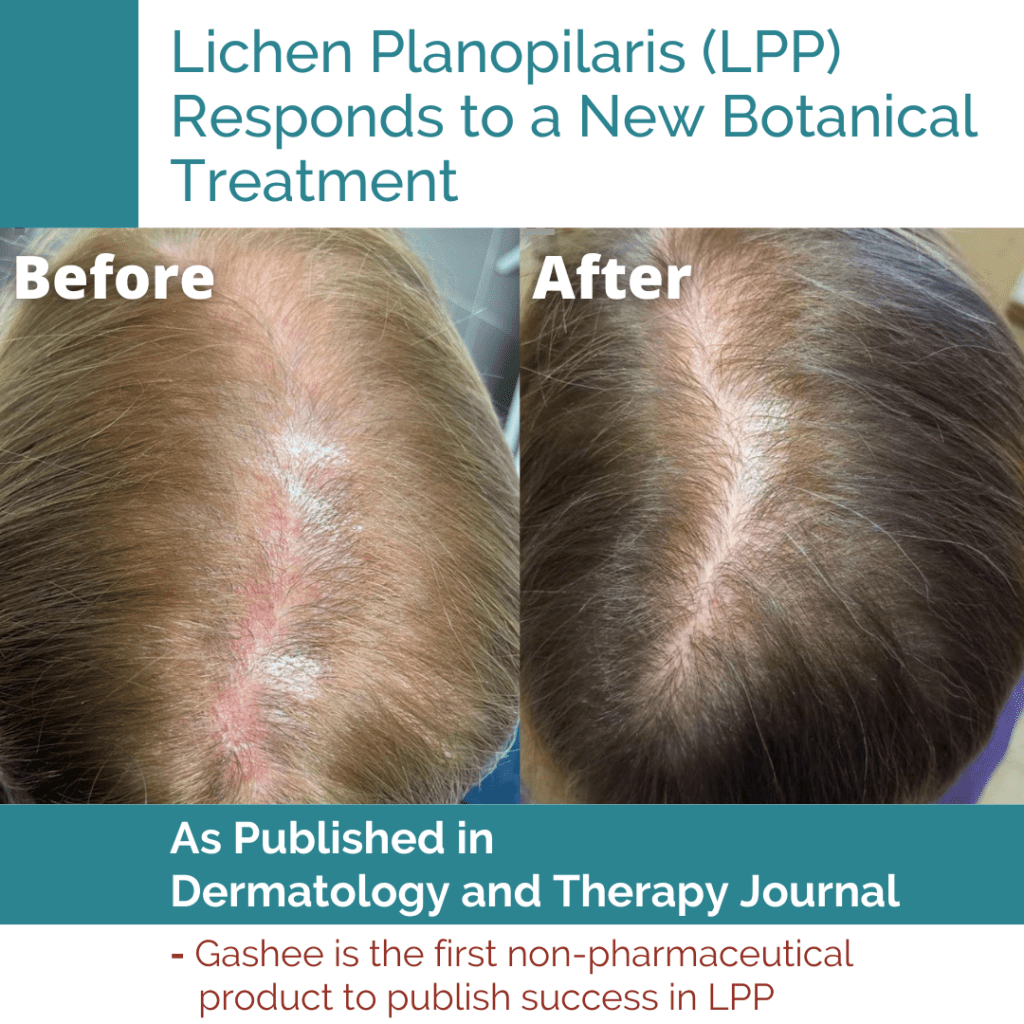
VIDEO: Gashee LPP Study Before & After Full Patient Results
For slides of more patients before and after the Gashee LPP study results, visit the YouTube video below.
Published Report, Lichen Planopilaris, LPP Responds to the Natural Hair Treatment Formula – Gashee
No Description
If you are interested in Gashee Natural Hair Products, use the button below to visit the Gashee website and online store at www.ugro.com. Suppose you suspect you have LPP (Lichen Planopilaris) and are interested in possibly using Dr. UGro Gashee Natural Hair Products to treat it. In that case, it is recommended to consult a dermatologist before using this product. To do so, you can use the free consultation button below to schedule a consultation with Dr. Sanusi Umar, MD, FAAD, the creator of Dr.UGro Gashee Natural Hair Products.
Frequently Asked Questions
Can Hair Grow Back After Lichen Planopilaris?
Hair regrows after Lichen Planopilaris – due to LPP scarring alopecia, typically left untreated, LPP can leave the user with permanent scarring, which leads to permanent hair loss – but if treated early enough, there may be the possibility of hair growth. However, this is based on the treatment and conditions of the patient’s hair and scalp.
Does Lichen Planopilaris Ever Go Away?
Typically Lichen Planopilaris (LPP) does not go away on its own – it will persist until the patient has no more hair for the body’s autoimmune system to attack.
Can You Dye Your Hair if You Have Lichen Planopilaris?
It is not recommended to dye your hair if you have Lichen Planopilaris (LPP) because it can aggravate hair follicles and scalp inflammation, worsening LPP symptoms and conditions.
What Causes Lichen Planopilaris of the Scalp?
Currently, there is no certainty on what causes LPP (Lichen Planopilaris). Only the mechanism of LPP is understood, in which the autoimmune system mistakes the body’s hair stem cells as a threat, therefore attacking and destroying it.
How Long Does Lichen Planopilaris Last?
There are no actual measurements of how long LPP lasts, but it often persists throughout a patient’s lifetime until there is no more hair for the patient’s immune system to attack.
How Common is Lichen Planopilaris?
LPP, also known as Lichen Planopilaris, is a rare disease and the most frequent cause of adult primary scarring alopecia [3].
One study states that LPP incidence varied from 1.15% – 7.59% [4].
Further Reading
- For more in-depth scientific reading on Lichen Planopilaris, visit this NIH article.
- For more information about the botanical ingredients used in Dr.UGro Gashee products, visit ugro.com.
- Visit this DermNet article for additional information regarding LPP basics.
Consult with an Experienced Dermatologist on LPP
If you are interested in Gashee or would like a free consultation with Dr. Umar, schedule a consultation with Dr. Umar using this link:
References
- 2022. [online] Available at: <https://rarediseases.info.nih.gov/diseases/3247/lichen-planopilaris> [Accessed 17 June 2022].
- Dermnetnz.org. 2022. Lichen Planopilaris — DermNet. [online] Available at: <https://dermnetnz.org/topics/lichen-planopilaris> [Accessed 17 June 2022].
- Cdn.mdedge.com. 2022. [online] Available at: <https://cdn.mdedge.com/files/s3fs-public/issues/articles/vol28_i1_Lichen_Planopilaris.pdf> [Accessed 18 June 2022].
- Brankov N, Conic RZ, Atanaskova-Mesinkovska N, Piliang M, Bergfeld WF. Comorbid conditions in lichen planopilaris: A retrospective data analysis of 334 patients. International Journal of Women’s Dermatology. https://www.ncbi.nlm.nih.gov/pmc/articles/PMC6116820/. Published June 7, 2018. Accessed June 17, 2022.
Further Reading:
What is central centrifugal cicatricial alopecia aka CCCA ?




